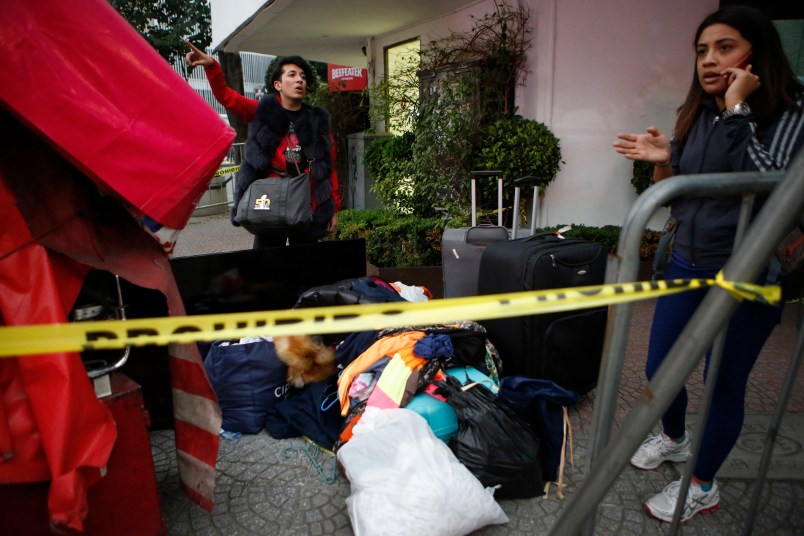MEXICO CITY (AP) — On rubber mats spread across a Mexico City recreation center, the Montero family cuddles under donated wool blankets, their first new possessions after abandoning their apartment following the deadly magnitude 7.1 earthquake.
Across the capital thousands of Mexicans are now believed homeless after the tremor leveled entire buildings and left others teetering on the edge of collapse. Men, women and children are now filling up gyms and event halls at more than two dozen designated shelters. Many are uncertain where they will go next, but grateful to have a safe refuge.
“I am sure nothing is going to fall here,” 7-year-old Oscar Montero says.
The Montero family lived on the first floor of a seven-story apartment building that on Tuesday became perilously sandwiched between neighboring towers on each side that have begun caving in. No one in the family of five was home during the quake. Oscar and his two older siblings were all at school, his parents at work.
Claudia Antonio, Oscar’s mother, entered the home quickly the quake after to salvage her children’s birth certificates and vaccination records. Other neighbors pulled out valuables like fridges and microwaves. In the first night after the tremor, some slept outside with the items they had pulled from the wobbly buildings.
The Montero family decided they would go to the Junior Club recreation center.
“Material things come and go,” Antonio, 38, said. “What I value most is our lives.”
The Junior Club is typically a place where children come to swim in the lap pool and adults spin on gym bikes. In the days since the quake it has become one of countless makeshift “homes of refuge,” receiving piles of donated bottled water, baby diapers and toys.
On a second floor dozens of the newly displaced camp out on sleeping mats and share their stories. Teams of volunteer workers visit with each family to determine their needs.
Aside from material needs, Dr. Alfredo Reyes, who was helping out nearby at the site of a flattened six-story building, said many of the survivors are likely to struggle emotionally. A nervous fear lingers in residents, sparked by any sign that buildings which once seemed unmovable might now collapse at the slightest provocation.
At one plaza where rescue workers gathered to organize supplies Tuesday night, panic spread swiftly after people shouted that they’d seen a damaged building start to sway.
“I’m scared!” a young woman cried, her voice trembling
“They’ve lost loved ones, their homes,” Reyes said, adding that the quake also bring up old traumas from prior quakes, like the one that hit Mexico City on the same day in 1985 and left thousands dead.
Oscar Montero, a boy with deep brown eyes whose playful energy sends him bouncing through the halls of the shelter, said the initial tremor didn’t scare him. He comforted the frightened children at his school.
But he is afraid to go home.
“What if there’s a quake again and things break?” he asks. “Here it won’t.”






